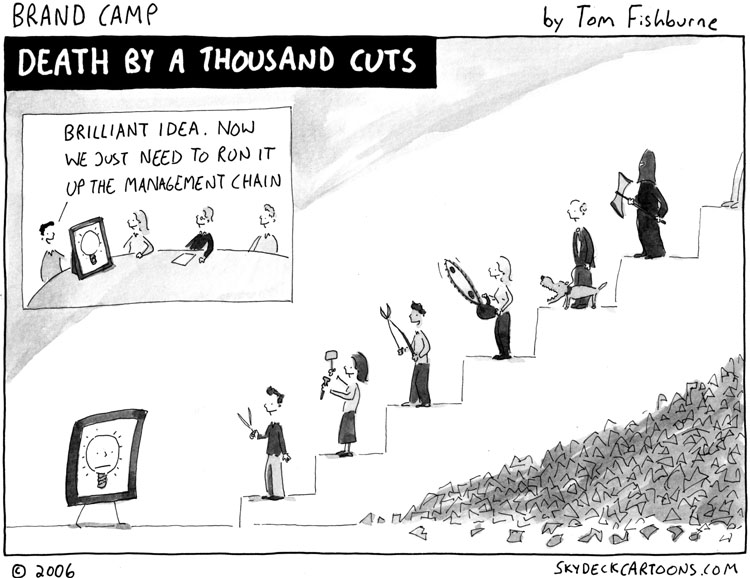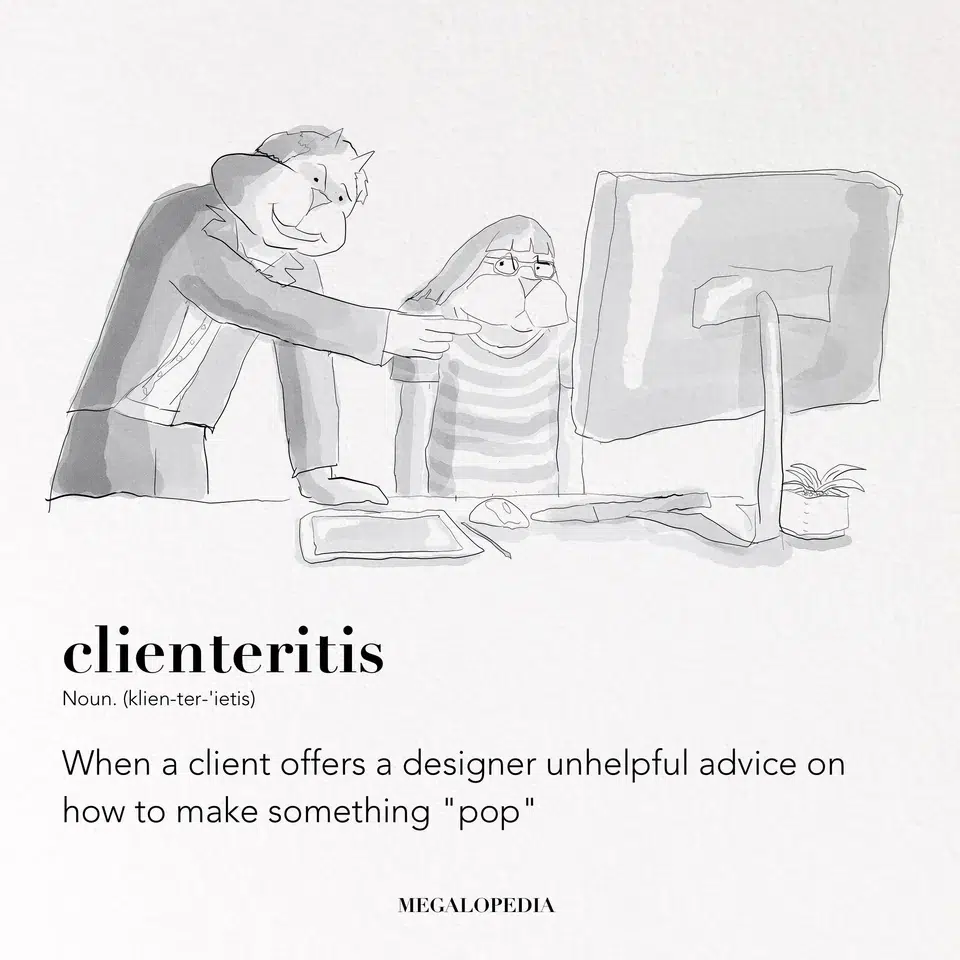Introduction
You just received a set of designs and a deadline for feedback… what’s next? Giving design feedback can be a daunting task, especially when you’re not a designer. Thankfully, we’ve got a talented team who is here to help!
While we’ll do the heavy (design) lifting, our process is a collaborative one and will require some work on your end. With that being said, it can be hard to know where to start–but if you follow these steps, it’ll make the entire process easier and more efficient. Before you know it, we’ll be on our way to a beautiful new website design!
 Source: https://marketoonist.com/2007/10/cartooniversary.html
Source: https://marketoonist.com/2007/10/cartooniversary.htmlDesignate a point person.
One of the first things you should do is internally identify what we like to call, the Greek chorus. In other words, the point person who will be responsible for gathering and consolidating the team’s feedback and ultimately providing sign-off on the design. This may be you!
We know it’s important to circulate the designs with a larger group, as there are often many stakeholders involved in these kinds of projects. Whether that be the executive team, department heads, or just someone who’s curious, there will likely be lots of feedback – and they may not always align. As part of our efforts to make sure you get the best ROI from our studio’s time, we strongly encourage you to consolidate feedback internally before our review sessions.
Having a single person gather and provide unified feedback will tell us exactly what needs to be done, so we don’t spend time making educated guesses that may miss the mark. Additionally, we’ll be relying on this point person to provide written approvals in the final stages of the designs.
Be specific with your feedback…
Be specific with your feedback and provide examples of why you like or don’t like something. This can help our designers understand where they may have gone wrong and how to fix it.
- Here’s an example of not-so-great feedback: “I don’t like it.”
- Instead, providing more context about why you don’t like it gives the designers clear parameters to avoid: “I don’t like it because the colors feel too harsh and cold. Some of our company’s core value props are being friendly and approachable – can we try something more personable and warm?”
Similarly, giving more information about why you like something will help ensure we keep certain elements in the next iteration(s) of the design.
- “I really like the use of abstract shapes here. It works well with our company’s fun and playful nature.”
In general, the most helpful comments are those that are specific, actionable, and clear.
 Source: @megalopedia https://www.instagram.com/megalopedia
Source: @megalopedia https://www.instagram.com/megalopediaBut not too specific! Consider the context of the project.
Being too granular can also bog down the design process. We love the collaborative nature of the design process and want to help you create the perfect design for you. With that being said, it can be easy to lose sight of the forest for the trees.
When thinking about leaving feedback, it’s important to consider the entire context of the project. Rather than focusing on “moving XYZ down 10 pixels”, think about how your feedback will help our designers create an overall cohesive and positive user experience for your visitors.
- What are you looking at and what is the goal of the design?
- Who is the target audience? Are you leaving feedback based on your personal opinion or from the perspective of your visitors?
- If you do want to deep dive into the details, what is the scope and timing of this project? Do we have the time and resources needed for multiple rounds of detailed revision or is this something we can address in a post-launch follow up?
Provide visual or textual examples if possible.
We love links, screenshots, and videos! Whenever possible links or screenshots of other designs (even if it’s just one) that exemplify what you’re looking for will greatly reduce the back-and-forth needed in the initial stages of our visual design process. That means we can spend more time perfecting the final design on time and in-budget.
Provide a list of priorities.
Having a list of priorities for the next round of revisions helps us focus on addressing your top concerns. If there are things that are critical to making the design meet your goals, let us know.
For example, if you know that 80% of your audience visits your website on a mobile device, we’ll proactively think about how to optimize the design for mobile devices.
If there’s one section of your homepage that you want visitors to pay specific attention to, we’ll brainstorm ways to make that section particularly engaging as opposed to focusing our resources on “nice to have” items.
Conclusion
In conclusion, the best way to give design feedback is by being specific and clear about what you like or dislike, but avoiding being pixel-focused. You can also use examples from other projects to illustrate your point. Finally, always prioritize what’s most important so that our design team knows what requires their attention first.
 hi, i'm
hi, i'm 



